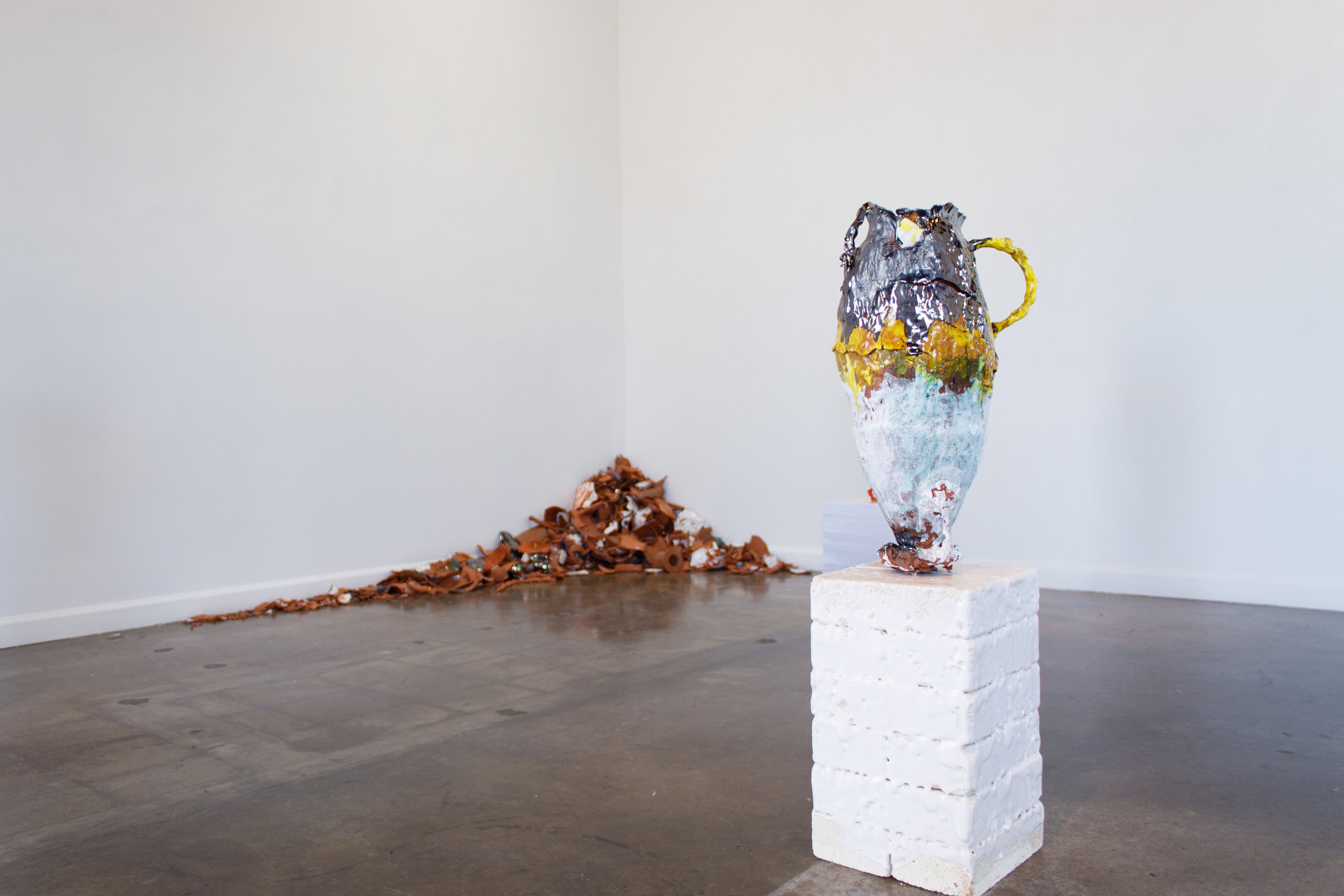













On the heels of their MFA thesis exhibition, good dyke art, Sam Mack presents their first solo exhibition with Galleri Urbane. Titled Pass, the exhibition is comprised of a newly produced body of work that remains rooted in the ideas of institutional critique and its contradictions that drove Mack’s graduate studies. In this exhibition, methods and materials of display commonly utilized by galleries and museums are installed in conjunction with hardware store materials in an attempt to highlight their visual similarities despite belonging to disparate environments with very different behavioral expectations. Mack juxtaposes these seemingly low-brow elements with iconography of the art institution to complicate the narrative of the gallery as a neutralized space.
The iconographic form of the pedestal calls attention to what is important and worthy of desire. Along with grip tape that mark acceptable standing perimeters found on the floors of museums, pedestals point toward boundaries: directing the movement of bodies and dictating appropriate behavior towards objects of value. In their installation, Mack calls attention to the normalized functions of these elements by queering them through scale, material, and orientation. A six-foot-tall pedestal puts an object way above eye level while grip tape travels up the side of another pedestal, questioning its “neutrality.” A pedestal coated in truck-bed liner converges blue collar expectations of care, value, and protection with that of the privileged art institution. These alterations serve to exaggerate the role of the pedestal, directing a clear awareness within viewers for their position and movement throughout the space.
Central to the exhibition is the use of the ceramic hydria, a pottery form from Ancient Greece used to carry water. Created with three handles, the forms literally reference a non-binary approach to an object and are reinterpreted with holes and bottomless forms, disrupting viewers expectations of how these vessels should perform and provide valuable function. Upside down and painted orange, the classical form can “pass” as a traffic cone that designates the use of space like its pedestal counterpart. Ratchet straps secure a set of hydriae to a leaning framework, simultaneously providing stability while threatening to crush the precarious ceramic object. This anxiety is manifested through an installation of crushed ceramic shards. Complete in their brokenness, the shards point towards principles of care and value that operate differently for objects that are not intended to be broken. Ultimately, the ceramic forms highlight and challenge the normative relationship between viewer, object, and gallery.
Pass calls attention to the powers at play in the white cube. While often presumed to be a neutral non-space, Mack’s installation emphasizes the hierarchies embedded within the histories of the art institution. As Mack writes: “We understand material and words to have meaning, then of course buildings and rooms have meaning. Institutions have meaning.”




